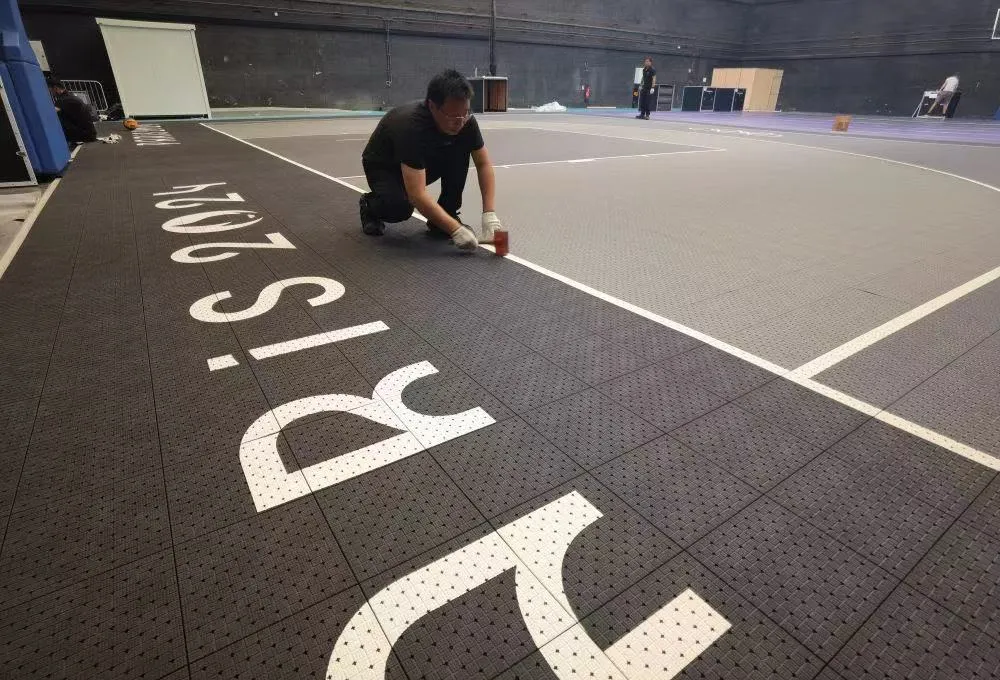8 月 . 20, 2024 21:38 Back to list
Choosing the Best Surface for Your Running Track Experience
The Importance of Running Track Surfaces in Athletic Performance
Running track surfaces play a crucial role in the performance of athletes. The material and design of a track can significantly affect not only speed but also safety and overall comfort. As a vital component of athletic facilities, understanding the different types of running track surfaces and their impacts is essential for athletes, coaches, and facility managers alike.
Types of Running Track Surfaces
Running tracks are typically made from a variety of materials, each offering distinct properties that cater to various needs
. The most common surfaces include1. Synthetic Track Surfaces These are made from materials like polyurethane or polyethylene, and they are known for providing excellent grip and shock absorption. The resilience of synthetic tracks helps reduce the impact on the athletes' joints, lowering the risk of injuries. They are often designed to maintain consistent performance in various weather conditions.
2. Cinder Tracks Although less common today, cinder and clay tracks have historical significance. They are composed of crushed cinders or clay, offering a natural feel for runners. However, these surfaces absorb moisture, leading to uneven conditions that can affect performance and safety.
3. Grass Tracks In some cases, particularly at schools or community parks, tracks are made of grass. While they offer excellent natural drainage and a softer landing, grass tracks can be inconsistent in terms of surface uniformity, which can pose challenges for athletes.
4. Tartan Tracks Tartan is a specific type of synthetic track known for its durability and comfort. It is designed with a cushioned layer that helps absorb shock, making it a favorite among many professional athletes. Tartan tracks are particularly suitable for both sprinting and distance running.
running track surface

Impact on Performance
The surface of a running track can influence an athlete’s performance in several ways. Firstly, different surfaces can provide varying levels of traction, which is crucial for sprinting and turns. A track with high traction allows athletes to generate more power with each stride, directly influencing speed and acceleration.
Additionally, the shock absorption properties of the surface affect fatigue levels. A better shock-absorbing surface can reduce impact stress on the body, allowing athletes to train longer and recover faster. This is particularly important during high-intensity training when the risk of injury is significantly elevated.
Safety Considerations
Safety is another critical factor when choosing a track surface. Uneven, worn, or poorly maintained surfaces can lead to accidents and injuries. Synthetic tracks are generally not only more durable but also less likely to develop hazardous conditions such as potholes or abrasions that can cause falls.
Moreover, weather resistance is an important aspect. Surfaces that can drain water effectively reduce the chances of slipping during rain, thus maintaining safety for athletes.
Conclusion
In conclusion, the choice of running track surface is fundamental to optimizing athletic performance and ensuring the safety of athletes. As technologies advance, synthetic surfaces are becoming the standard due to their resilience, safety, and performance-enhancing features. Whether for amateur runners or elite athletes, investing in quality track surfaces can make a significant difference in training outcomes and competitive success. Athletes and coaches should always consider the interplay between track surface and performance, prioritizing safety and comfort to achieve their best results.
-
Custom Pickleball Court Solutions Convert Tennis & Indoor Builds
NewsMay.30,2025
-
Outdoor Pickleball Court Costs Build & Install Pricing Guide
NewsMay.30,2025
-
Premium Pickleball Sports Courts Custom Design & Installation
NewsMay.30,2025
-
Indoor Pickleball Courts Tennis Court Conversion & Custom Builds Tempe
NewsMay.29,2025
-
Professional Pickleball Court Installation & Tennis Court Conversions
NewsMay.29,2025
-
Grey Synthetic surface-rubber prefabricated track
NewsMar.07,2025

